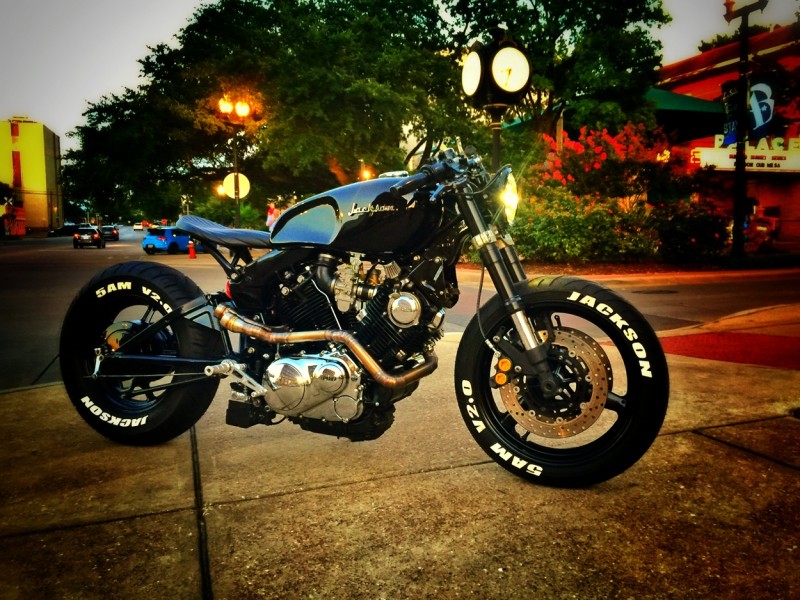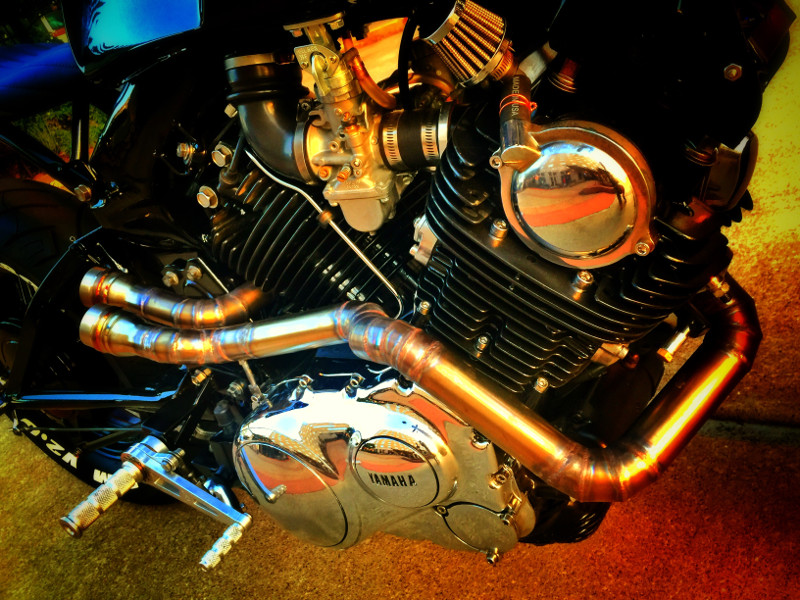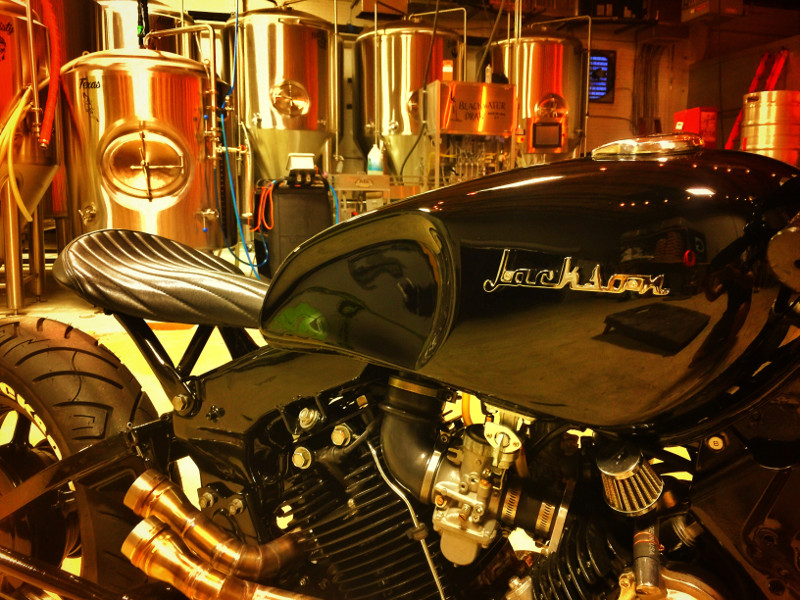Building a custom Yamaha Virago has always held a special place in the world of motorbike projects. Over the last eight years, twelve different custom Viragos have been created, each with its own style and story. The Virago keeps drawing attention because it offers a flexible base for personal touches and unique designs.
One special project, made by the Jackson family, stands out for both its background and its look. While this bike blends the “Bobber” and “Cafe Racer” styles, it is truly unique to its creators, thanks to clever design choices and personal touches. Their journey highlights what makes custom Viragos so popular: the opportunity to combine experience, family teamwork, and attention to small details.
Key Takeaways
- Custom Virago projects have a rich and varied past.
- Family involvement and unique choices set the “Jackson” bike apart.
- Careful design decisions made this project stand out among other custom builds.
Evolution of Custom Virago Builds
Worldwide Interest Since the Early 1980s
Yamaha first released the Virago in 1981. Since then, the bike has gained a strong following among custom builders worldwide. Its popularity is not limited to one country or style; people from many regions enjoy working on it.
Enthusiasts are drawn to the Virago because of its unique design and the variety of models produced over the years.
| Year Introduced | Notable Feature |
|---|---|
| 1981 | First Virago model released |
| 1988 | Improved engine and mechanics |
| 2000s | Continued global popularity |
The continued demand for this motorcycle shows why it is still a top choice for custom projects.
Numbers and Approach to Customization
In the past eight years, twelve unique Virago projects have been highlighted. While this might seem like a large number to some, it is just a small sample compared to how many custom Viragos exist globally. The number is influenced by the many types and versions of the Virago family.
Many builders see each project as more than just a bike—they see it as a chance to try new ideas and styles. Some bikes take inspiration from classic looks, while others mix elements like café racer fronts with bobber-style seats.
- Twelve featured custom projects in the last eight years
- Each project is shaped by the builder’s experience
- Custom Viragos remain in demand due to their flexibility and style
Builders often work as families, passing on skills and creativity from one generation to the next. The focus stays on making smart, tasteful choices instead of always trying for something radical. These points help explain why the Virago continues to be a favorite in the custom world.
The Jacksons’ Custom Virago Story



Craig Jackson’s Experience and Passion
Craig Jackson works as an engineer in the semiconductor field. He has been interested in motorcycles since childhood and even raced motocross for some time. About eight years ago, he decided to start customizing bikes. Before taking on his first project, he invited his children to join him, wanting it to be a family effort.
- Profession: Engineer
- Motorcycle Background: Lifelong interest, experience in motocross
- Start of Custom Builds: Eight years ago
Building Projects with Sam and Max
When Craig asked his sons, Sam (age 15) and Max (age 19), if they wanted to build motorcycles together, they were excited to join. Each of them worked on a different bike. Craig built one Virago, Max built his own, and Sam created another. They ended up with three unique machines, each reflecting personal tastes and skills.
| Family Member | Age During Project | Contribution |
|---|---|---|
| Craig | — | Led, built own bike |
| Max | 19 | Built own bike |
| Sam | 15 | Built own bike |
Changes and Progress Over the Years
The Virago project went through two stages. The first version was simple, but over six years, Craig and Sam decided to make big changes. They took the bike apart and rebuilt it with more skill and better tools. They also replaced some parts: swapped in a 1988 engine and used a front end from a 2003 Yamaha R1. Custom details like handmade exhaust pipes and knee dents on the fuel tank made it stand out. The family even designed their own “Jackson” logo for the bike, showing pride in their work. The bike’s nickname, “5 AM,” connects to Sam, Craig’s youngest son.
Key upgrades included:
- New engine from 1988 model
- Front parts from a Yamaha R1 (2003)
- Handmade exhaust and tank features
- Custom logo and unique seat design
These choices made the motorcycle both beautiful and personal, even if they didn’t try anything totally new or extreme. The build shows how careful ideas and small details can elevate a project.
Distinct Aspects of the ‘Jackson’ Virago
Merging Classic and Modern Styles
The ‘Jackson’ Virago is a mix of two well-known motorcycle styles. The seat and rear part follow the look of a bobber, with a simple and low design. At the same time, the front has many features of a cafe racer, including slim elements and a streamlined shape. This blend gives the bike a unique style that doesn’t fit just one group.
Style Comparison Table
| Feature | Bobber Influence | Cafe Racer Influence |
|---|---|---|
| Seat Style | Low, solo seat | Not typical |
| Rear Wheel Look | Classic, open, simple | Less common |
| Front End | Modern, light, slim | Very common |
Key Visual Choices
Some small but important choices give the ‘Jackson’ Virago its special look. The headlight at the front is thin, making the bike look fresh and light. The seat is kept very low and in a straight line, which is unusual since most people line the seat up with the top of the gas tank. The gas tank has hand-made knee indents, making it more interesting and easier to grip. White letters on the tires and a custom ‘Jackson’ logo add personal style.
Notable Features:
- Hand-made knee indents on the gas tank
- Custom ‘Jackson’ logo
- White tire letters for a sport-inspired look
- Unusually low, flat seat alignment
Practical and Performance Upgrades



The bike includes several technical improvements. The team replaced the engine for a more reliable 1988 model to avoid common starter problems. The whole front end was swapped with parts from a 2003 Yamaha R1, bringing in better handling and a modern feel. The exhaust system was built by hand, helping the motor run and sound better.
Upgrades List:
- Engine changed to more reliable model
- Front end from modern Yamaha R1
- 100% custom exhaust pipes
- Careful rebuild using improved tools and skills
Second Generation Makeover
Motivations Behind the Update
The original version of the bike felt plain when compared to more unique Virago customs. Six years after finishing it, Craig and Sam realized they had gained new skills, access to better equipment, and more technical know-how. They wanted to fix issues with the early models and create something that stood out more while solving mechanical problems.
Key Enhancements and Changes
A major technical improvement was replacing the starter-prone engine with one from a 1988 version. The entire front end was upgraded, using parts from a 2003 Yamaha R1. They crafted the exhaust pipes by hand and shaped custom knee dents into the fuel tank for both style and comfort.
| Enhancement | Detail |
|---|---|
| Engine | Swapped for 1988 model |
| Front Section | Parts from 2003 Yamaha R1 |
| Exhaust | 100% handmade |
| Tank | Custom knee dents |
| Logo | Personalized ‘Jackson’ design |
Visual Upgrades
Smaller design decisions made a big difference in looks. The front became lighter and sleeker, thanks to a slim headlight and low-profile tire. The solo seat sits in a lower position than most, aligned with the underside of the tank, making the bike appear more balanced. The bold ‘Jackson’ logo and white letters on the tires add to its unique character. Each of these touches helps it look both modern and classic at the same time.
Comparison with Other Customized Viragos
Distinctive Front-End Styling
One part that really stands out on this build is how light and slim the front end appears. Many other custom Viragos tend to have bulkier headlights and thicker front tires. In contrast, this Virago uses a thinner headlight and a lower-profile tire, giving it a modern and fresh look without extra weight up front.
| Feature | Common Viragos | This Build (“Jackson”) |
|---|---|---|
| Headlight | Larger, bulkier | Thinner, more compact |
| Front Tire | Standard profile | Low profile |
| First Impression | Sturdier, heavier | Lighter, sleeker |
Original Seat Positioning Approach
The seat choice also sets this project apart. While single seats are normal for customized Viragos, it is rare to see the seat placed so low. Typically, other builders align the seat with the top of the gas tank. In this case, the seat is leveled with the bottom of the tank and kept perfectly horizontal. This uncommon and clean alignment creates a balanced and striking look.
- Common approaches:
- Seat aligned at tank top
- Slight angle to seat
- Jackson’s approach:
- Seat aligned at tank bottom
- Held perfectly flat
Balanced and Unified Design



All the choices made come together to create a motorcycle that looks complete and elegant. The added knee dents in the tank, custom logo, and simple but sharp details give it a smooth and well-thought-out appearance. This is not about adding the most unique parts, but choosing every detail carefully so nothing looks out of place or forced. The smooth flow from front to back and the smart balance in every detail give this Virago a unified and attractive style.
Lasting Influence and Motivation
The Story Behind the Name ‘5 AM’
The name “5 AM” is connected to Craig Jackson’s youngest son, Sam. The choice reflects a family memory, with the name “Sam” sparking the title “5 AM.” This personal detail gives the Yamaha Virago a unique and meaningful identity within their family.
| Name | Meaning |
|---|---|
| 5 AM | Sam, the youngest son |
Insights Learned from Craig Jackson
Craig Jackson’s journey offers important lessons for anyone interested in custom motorcycles. He started as a beginner and worked on his skills with his children. Their results show the value of gaining experience, learning through each project, and making careful choices.
- Take time to improve with each build
- Pay attention to small details
- Try new ideas without losing sight of classic style
Craig’s balance between being bold and keeping things simple sets a strong example for other builders.
Effects on Custom Motorcycle Builders
Craig Jackson’s work has influenced the custom motorcycle community in several ways. His approach, especially with the Virago, demonstrates that success comes from thoughtful decisions rather than chasing trends. The “Café-Bobber” style that mixes classic features with personal touches shows how custom bikes can stand out without being extreme.
- Mix different styles to create something new
- Focus on clean lines and well-chosen details
- Celebrate family teamwork in the building process
These ideas continue to inspire builders to push boundaries while respecting the roots of motorcycle design.










